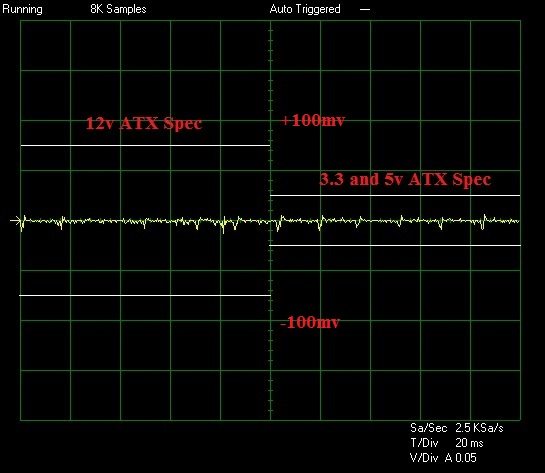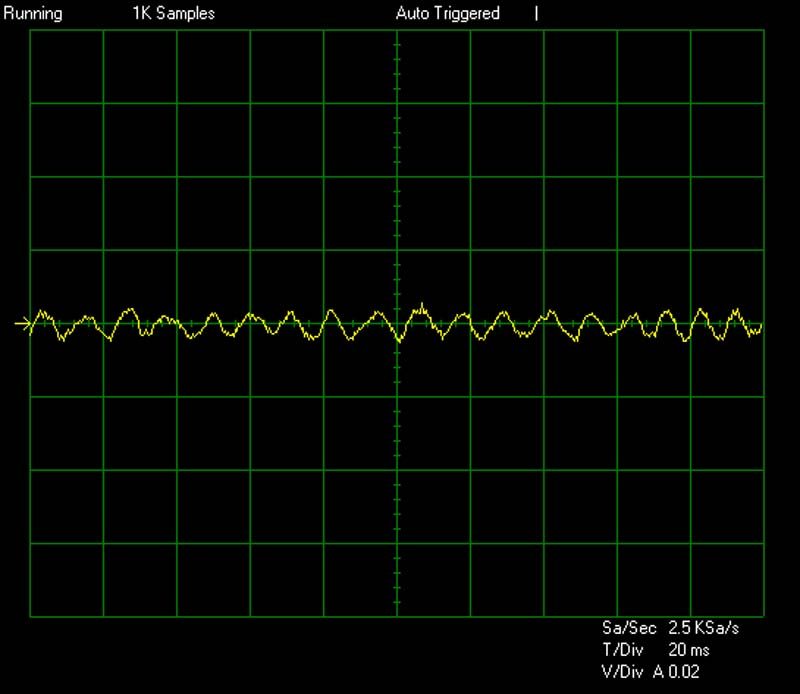FSP Twins 500W Redundant ATX Power Supply Review
Peter Donnell / 8 years ago
Ripple
Noise and Ripple can easily be measured by an oscilloscope. These show how much voltage fluctuation there is on a particular rail. We tested the rail stability of the 3.3 volt, 5 volt and 12 volt rails using an identical time and millivolt scale for all graphs. millivolt ripple is measured by the peak to peak size of the voltage curve.

Sample Ripple Graph
The latest ATX 12 volt version 2.3 specifications state that ripple from peak to peak must be no higher than 50 millivolts for the 3.3 volt and 5 volt rails. The 12 volt rail is allowed up to 120 millivolts peak to peak to stay within specifications. Millivolt figures are stated to the closest increment of 5 given their variability.
3.3V Ripple 5V Ripple 12V Ripple
| Load (%) | |||
| 20 | 10.6 | 7.6 | 55.6 |
| 40 | 10.2 | 7.8 | 56.8 |
| 60 | 10.2 | 8.6 | 58.6 |
| 80 | 10.2 | 9.4 | 64.8 |
| 100 | 10.2 | 10.4 | 76 |
Ripple is quite high on this unit, at least on the 12V line. Of course, anything under 120mv is ok, and the unit didn’t go past 76mv. It looks bad to me, as many high-end PSUs often score a fraction of that. However, this is still within acceptable limits by proven standards.
3.3 volt @ 100%

5 volt @ 100%

12 volt @ 100%




















